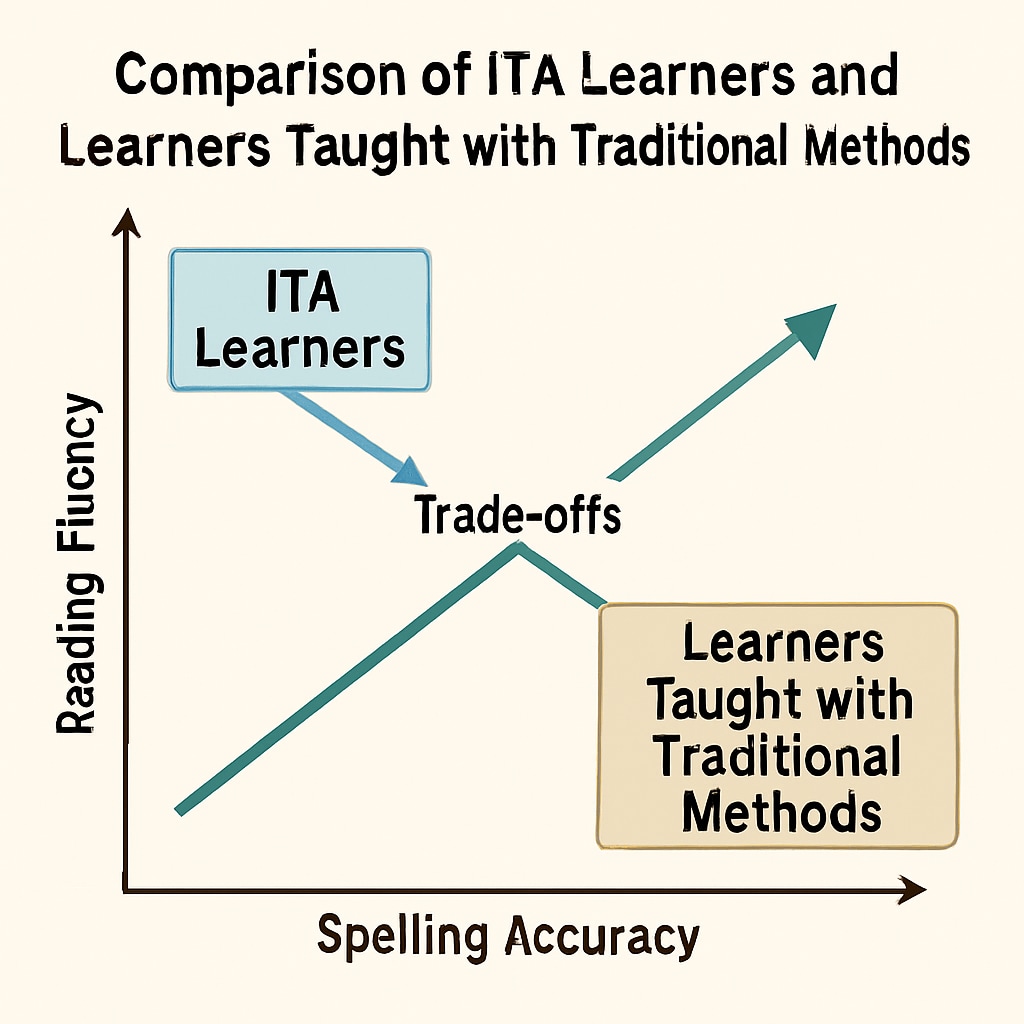The Initial Teaching Alphabet (ITA), introduced in the 70s as part of a bold educational experiment, promised to revolutionize how children learned to read. By simplifying English phonetics, the ITA method sought to accelerate early reading proficiency. However, its long-term impact on spelling ability remains a subject of concern. While the approach had initial success in helping young learners decode words, it inadvertently created challenges in mastering standard English spelling conventions. This article examines the origins, principles, and implications of the ITA teaching method.
The Origins and Goals of the ITA Teaching Method
The ITA was developed in the 1960s by Sir James Pitman, a British educator and grandson of the inventor of shorthand. It was designed to address the complexities of English spelling, where one sound can be represented by multiple letter combinations. For example, the “f” sound appears in “fun,” “phone,” and “enough,” confusing early learners. The ITA used a simplified 44-character alphabet, with each symbol representing one sound consistently. This approach aimed to reduce cognitive load and help children focus on reading fluency rather than grappling with irregular spellings.
Advocates of the method claimed that ITA learners achieved reading proficiency faster than peers taught with traditional methods. As a result, the ITA was adopted in schools across the UK and the US during the 1960s and 70s. However, as the experiment progressed, educators and researchers began to observe unintended consequences.

How ITA Influenced Spelling Development
While the ITA method helped children gain an early advantage in reading, its impact on spelling was less favorable. Transitioning from ITA to standard English involved replacing the simplified symbols with traditional spellings. This shift often caused confusion, as students had to unlearn the phonetic consistency of ITA and adapt to English’s irregularities.
For example, a child who learned the ITA spelling “fon” for “phone” might struggle to reconcile it with the standard spelling. This cognitive dissonance often led to persistent spelling errors, even into adulthood. A 1974 study published in the Encyclopedia Britannica noted that ITA graduates exhibited lower spelling accuracy compared to peers taught with traditional methods.
Furthermore, critics argued that ITA disrupted the natural connection between reading and writing. Since ITA learners were not exposed to standard spellings from the beginning, they missed opportunities to internalize correct patterns through repetition.
Lessons Learned from the ITA Experiment
The decline in ITA’s popularity by the late 1970s stemmed from these challenges. Here are some key takeaways from the experiment:
- Early literacy gains: ITA was effective in improving initial reading fluency, demonstrating the benefits of reducing complexity in early education.
- Long-term trade-offs: The simplified alphabet hindered the development of spelling proficiency, highlighting the need for continuity between early and later education stages.
- Adaptation challenges: Transitioning from a phonetic system to traditional English spelling proved to be a significant hurdle for many students.
As a result, educational systems moved away from ITA in favor of methods that integrated phonics and standard spelling from the outset. Modern approaches, such as synthetic phonics, aim to balance early reading support with long-term language skills.

Implications for Future Educational Practices
The ITA teaching method serves as a cautionary tale for educators and policymakers. While innovation is essential in addressing learning challenges, it is equally important to consider the long-term implications of new methods. The balance between simplifying learning processes and ensuring foundational skill development remains a key challenge in education.
Today, as educational technology advances, the lessons of ITA remain relevant. Tools like adaptive learning software must be designed with an eye toward both short-term benefits and enduring outcomes. The ITA experiment reminds us that early success should not come at the expense of long-term proficiency.
In conclusion, the ITA method of the 70s highlights the complexities of educational reform. While it offered a promising solution to early reading challenges, its unintended effects on spelling underscore the need for holistic approaches to language education. As we continue to innovate, the ultimate goal should be to equip learners with skills that endure throughout their lives.
Readability guidance: Short paragraphs, lists, and a clear structure improve readability. Transition words like “however,” “therefore,” and “as a result” ensure logical flow. The article balances historical context with modern relevance, making it accessible to educators, researchers, and general readers.


